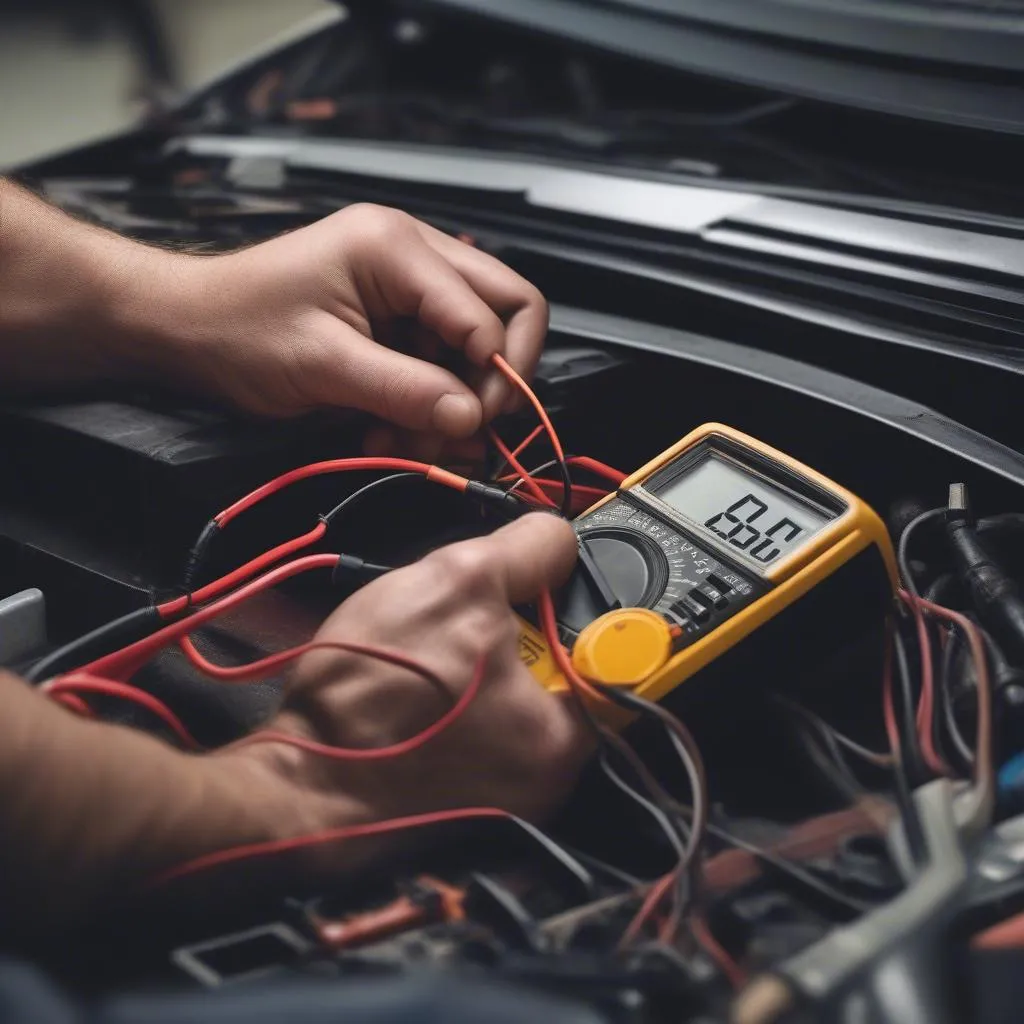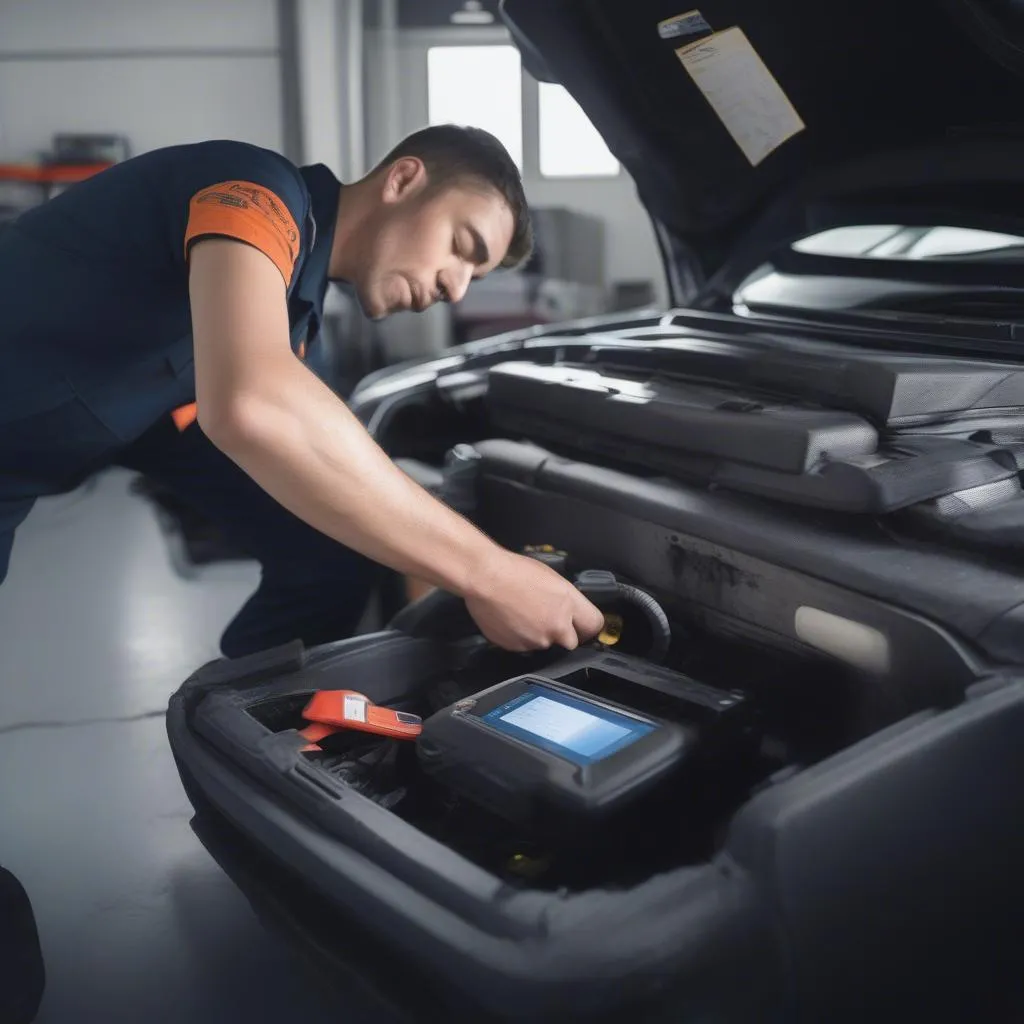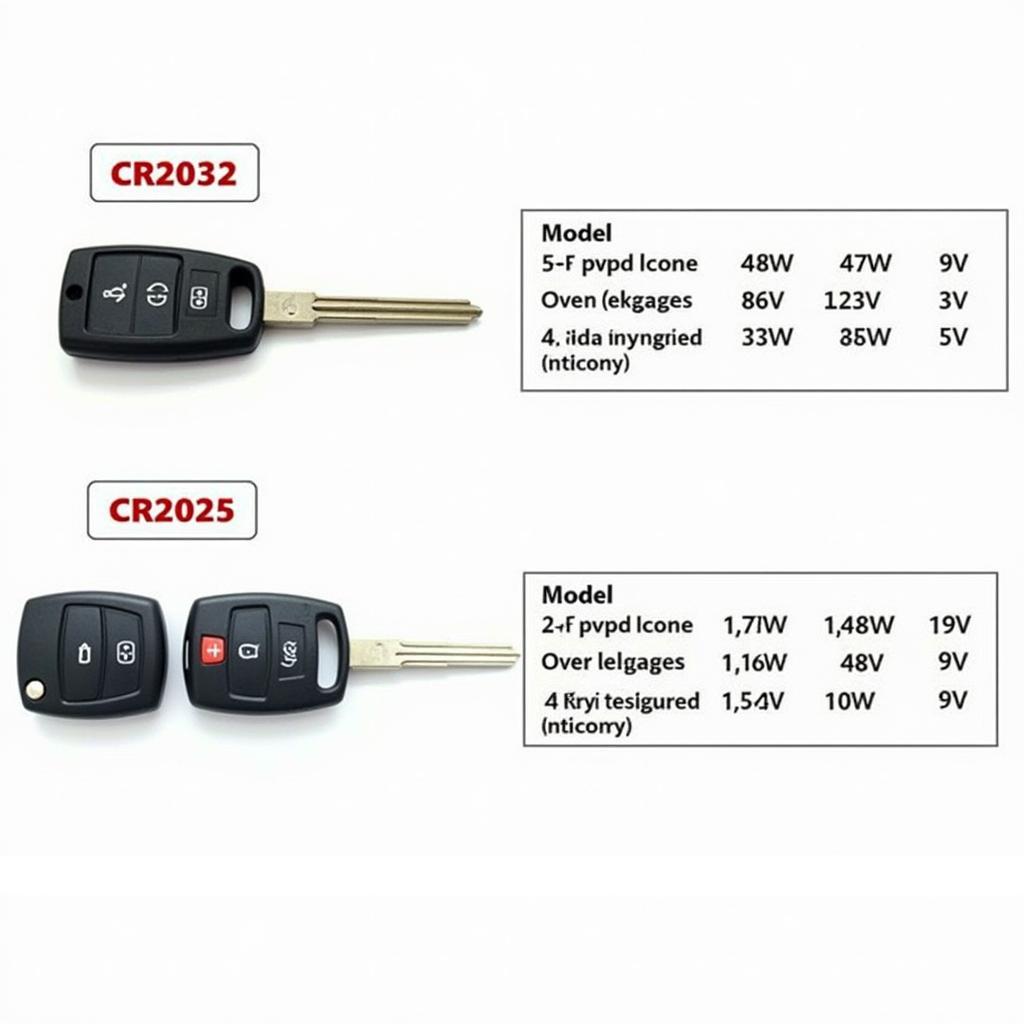Is your car’s anti-theft system giving you a headache? Having trouble starting your car or dealing with an alarm that won’t stop? You’re not alone. Anti-theft systems, while essential for security, can sometimes become overly sensitive and cause frustrating issues for car owners. This guide will walk you through the most common reasons for disabling a car’s anti-theft system and provide safe and effective methods to regain control.
Understanding Your Car’s Anti-theft System
Before we dive into solutions, it’s crucial to understand why your anti-theft system might be acting up.
Common Causes of Anti-theft System Issues
- Weak or Dead Car Battery: A low battery is the most common culprit behind anti-theft malfunctions. The system needs a consistent power supply to function correctly.
- Faulty Key Fob Battery or Signal: Modern cars rely on key fobs to communicate with the anti-theft system. If the fob’s battery is weak or the signal is interrupted, the system might not recognize the key, leading to a lockout.
- Damaged Key or Ignition Cylinder: A worn-out key, a damaged ignition cylinder, or problems with the key reader in the ignition can prevent the system from disarming.
- Malfunctioning Sensors: Most anti-theft systems use various sensors to detect intrusion. A faulty door lock sensor, hood sensor, or impact sensor can trigger the alarm or immobilizer even when there’s no threat.
- Software Glitches: Like any electronic system, your car’s anti-theft system is vulnerable to software glitches that can cause unexpected behavior.
Identifying the Problem: Is Your Anti-theft System the Culprit?
Look for these signs that point to a potential anti-theft system issue:
- Rapidly Flashing Security or Immobilizer Light: This is a telltale sign that the system is activated or malfunctioning.
- Engine Cranks but Won’t Start: If your engine turns over but doesn’t fire up, the immobilizer might be preventing fuel delivery or ignition.
- Alarm Goes Off Randomly: A hypersensitive or faulty sensor can cause the alarm to sound for no apparent reason.
- Key Fob Not Working: If your key fob fails to unlock the doors, start the engine, or only works intermittently, there might be an issue with the fob, the battery, or the car’s receiver.
Tools and Equipment for Disabling the Anti-theft System
In many cases, you can address basic anti-theft issues yourself. Here are the tools you might need:
- Car Manual: Your car manual is your best friend. It contains specific instructions for your car model’s anti-theft system.
- Spare Key Fob: Always keep a spare key fob handy in case the primary one malfunctions.
- Battery Jumper Cables or Charger: To tackle a dead or weak car battery.
- Code Reader (OBD-II Scanner): A code reader can diagnose the problem by reading the car’s diagnostic trouble codes (DTCs). [Link to a Cardiagtech OBD-II Scanner Product Page]
How to Disable the Anti-theft System
Disclaimer: The following methods provide general guidance. Procedures may vary significantly between car makes, models, and years. Always refer to your car manual or consult with a qualified automotive locksmith or mechanic for vehicle-specific instructions.
1. Check the Basics:
- Car Battery: Ensure your battery has enough charge. Try jump-starting the car or using a battery charger.
- Key Fob Battery: Replace the key fob battery if it’s weak or dead.
- Key Fob Synchronization: Consult your car manual for instructions on how to resynchronize your key fob with the vehicle.
2. Resetting the Anti-theft System:
- Manual Reset Procedures: Some cars have specific procedures for resetting the anti-theft system outlined in the manual. This might involve a sequence of actions, such as inserting and turning the key in the ignition or using door lock buttons.
- Disconnecting the Battery: Disconnecting the negative terminal of the battery for a few minutes and then reconnecting it can sometimes reset the system. Caution: This should be done with caution, as it can erase certain vehicle settings.
3. Using an OBD-II Scanner (For Advanced Users):
- Reading Diagnostic Trouble Codes (DTCs): An OBD-II scanner can retrieve codes stored in the car’s computer, pinpointing the source of the issue.
- Clearing Codes and Recalibrating: Depending on the scanner’s capabilities and the specific issue, you might be able to clear the codes triggering the anti-theft system and potentially recalibrate it.
[Link to a Cardiagtech blog post on “Understanding and Using an OBD-II Scanner”]
4. Professional Help:
If the above steps don’t resolve the problem, it’s best to seek help from a professional automotive locksmith or a qualified mechanic specializing in automotive electronics. They have the expertise and tools to diagnose and repair complex anti-theft system issues.
 Checking Car Battery with Multimeter
Checking Car Battery with Multimeter
FAQs: Common Anti-theft System Questions
Q: How do I know if my car battery is causing the anti-theft system problem?
A: A weak battery can cause all sorts of electrical gremlins, including anti-theft malfunctions. If your car struggles to start, the lights are dim, or you hear clicking noises when you turn the key, the battery is likely the issue.
Q: My key fob is new, but it’s still not working. What could be wrong?
A: Even with a new battery, the issue might be with the key fob’s programming, the car’s receiver, or a faulty antenna.
Q: Can I permanently disable my car’s anti-theft system?
A: While technically possible, it’s highly discouraged. Disabling the anti-theft system makes your car an easy target for theft and can significantly lower its resale value.
Q: I accidentally triggered my car alarm. How do I turn it off?
A: Most car alarms will turn off automatically after a set period or when you unlock the car with your key fob. Refer to your owner’s manual for the specific deactivation procedure for your model.
 Mechanic Using OBD-II Scanner on a Car
Mechanic Using OBD-II Scanner on a Car
Cardiagtech: Your Partner in Automotive Diagnostics
Troubleshooting modern car issues can be complex. At CARDIAGTECH, we offer a range of advanced diagnostic tools and software solutions to help you get to the bottom of automotive electrical problems. Contact us today to learn more about our products and services designed to empower car owners and professionals alike.

